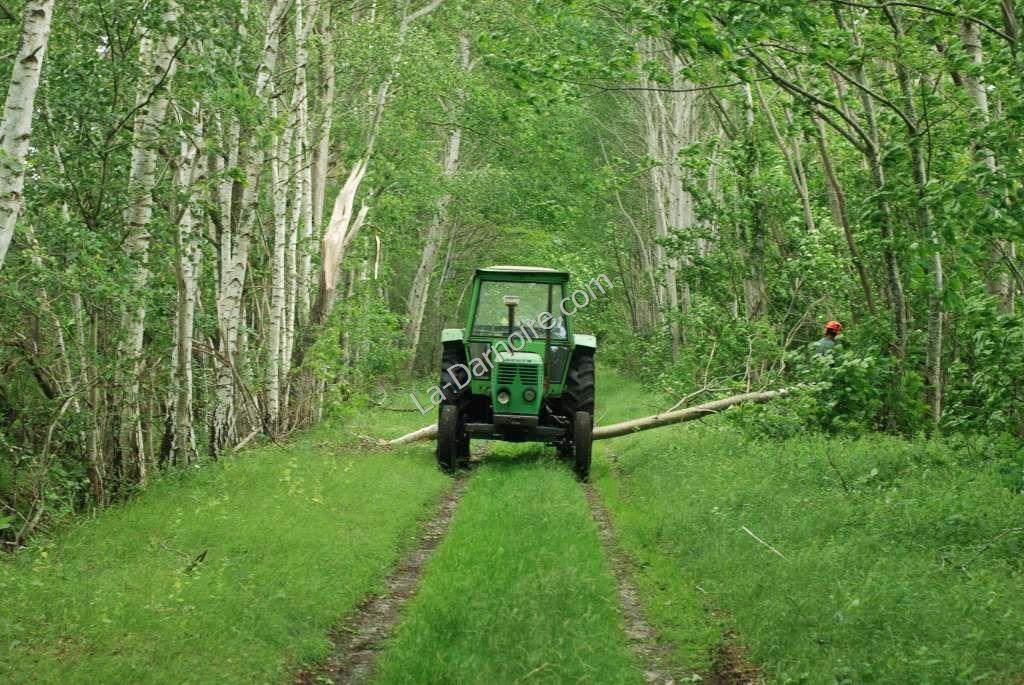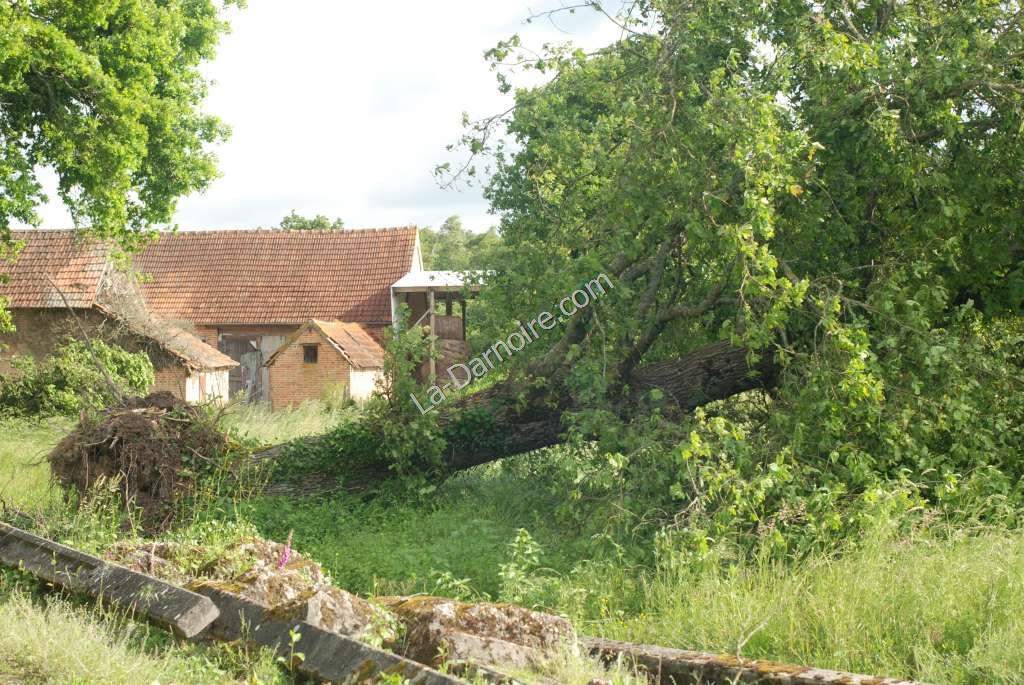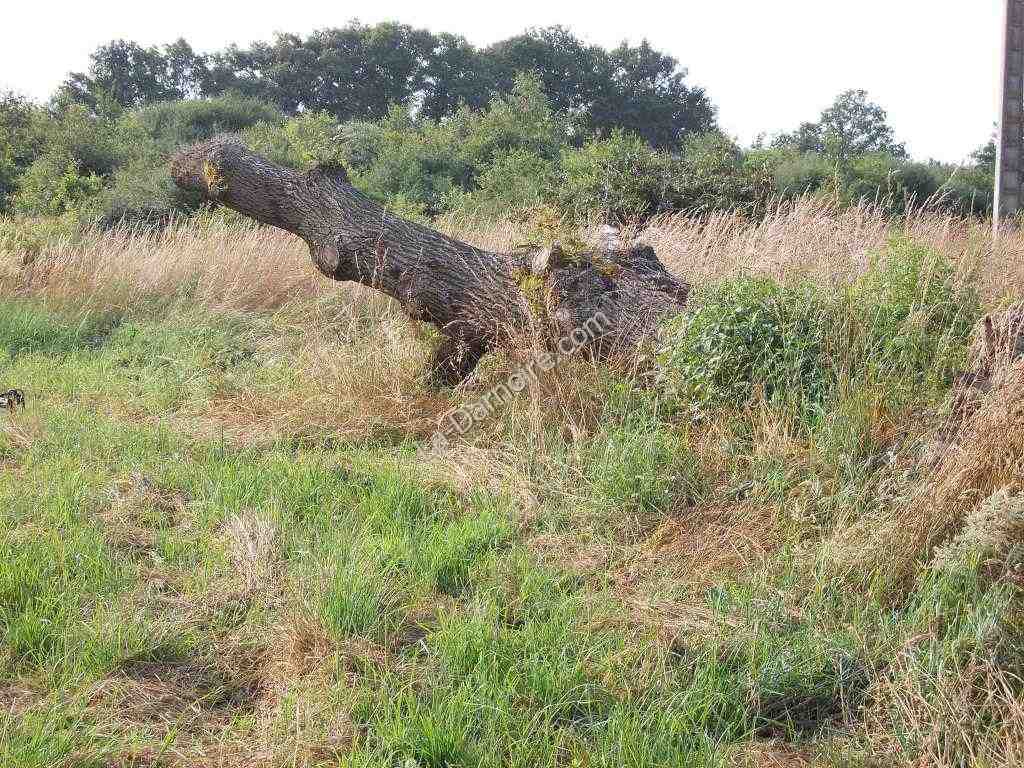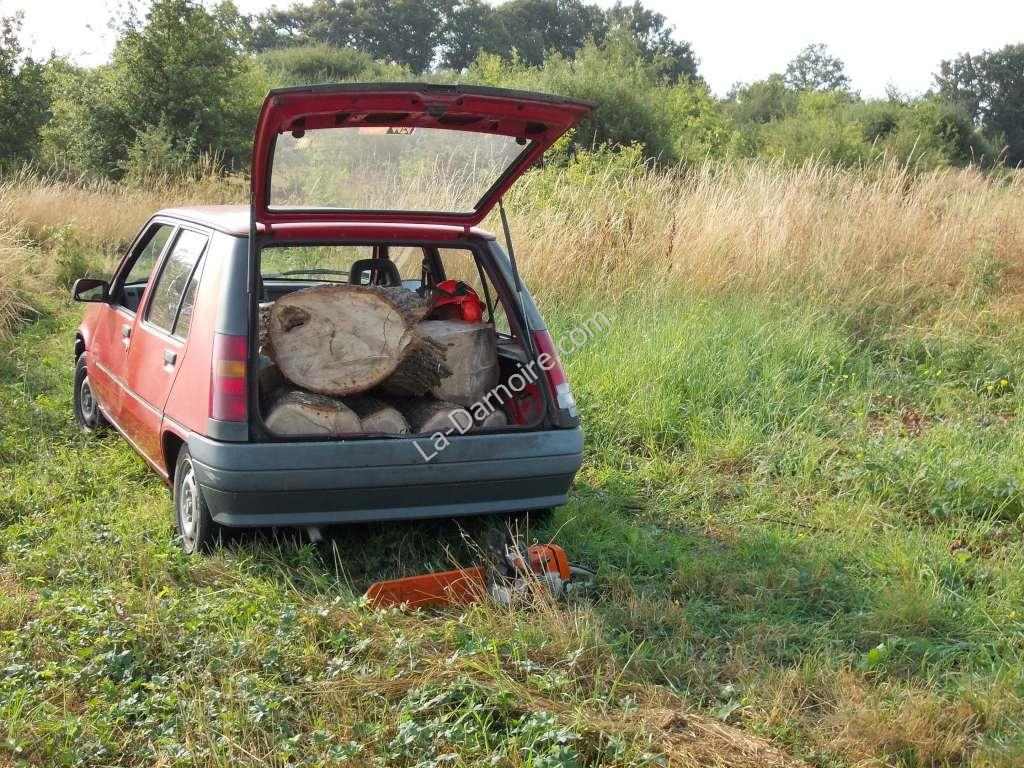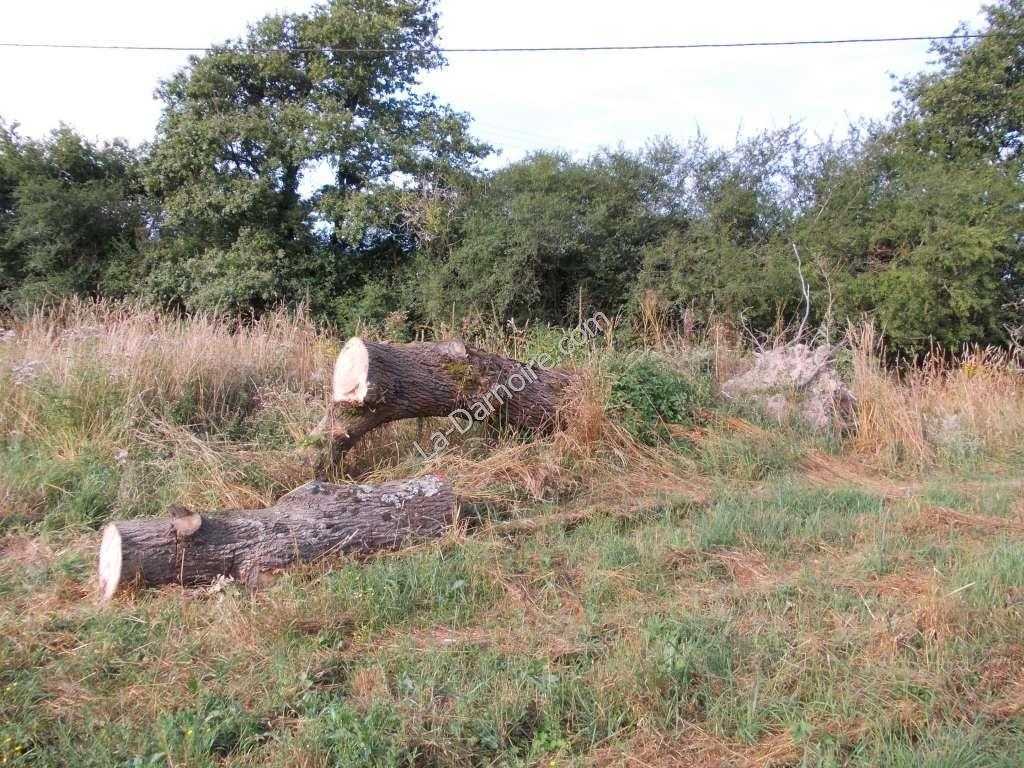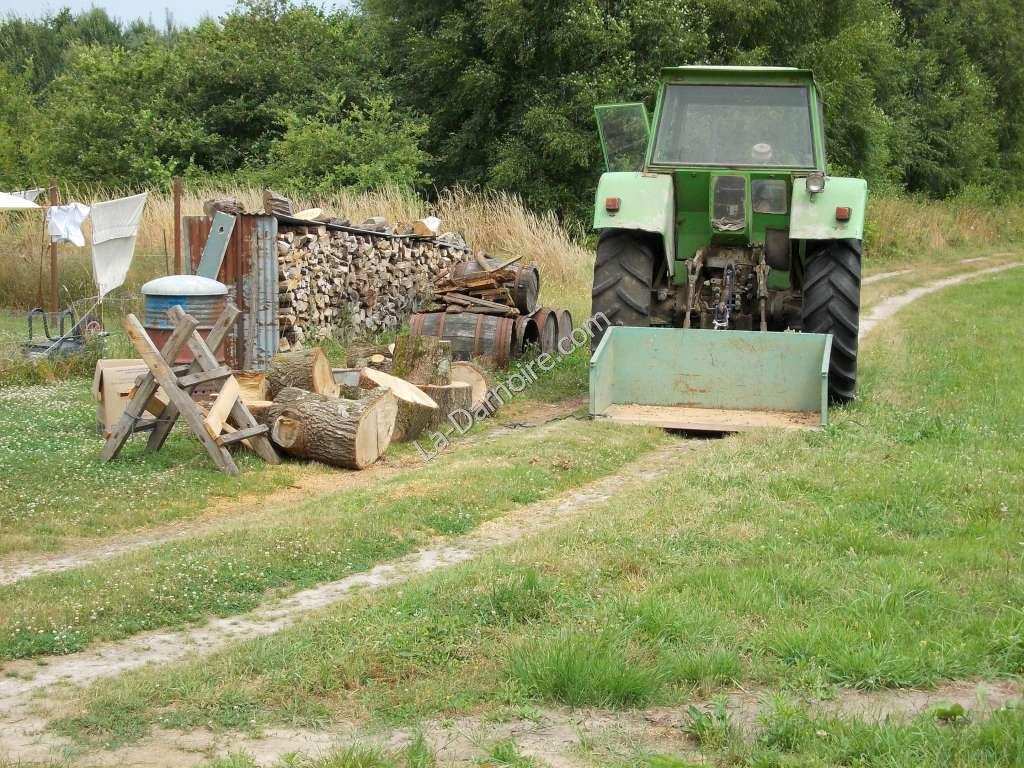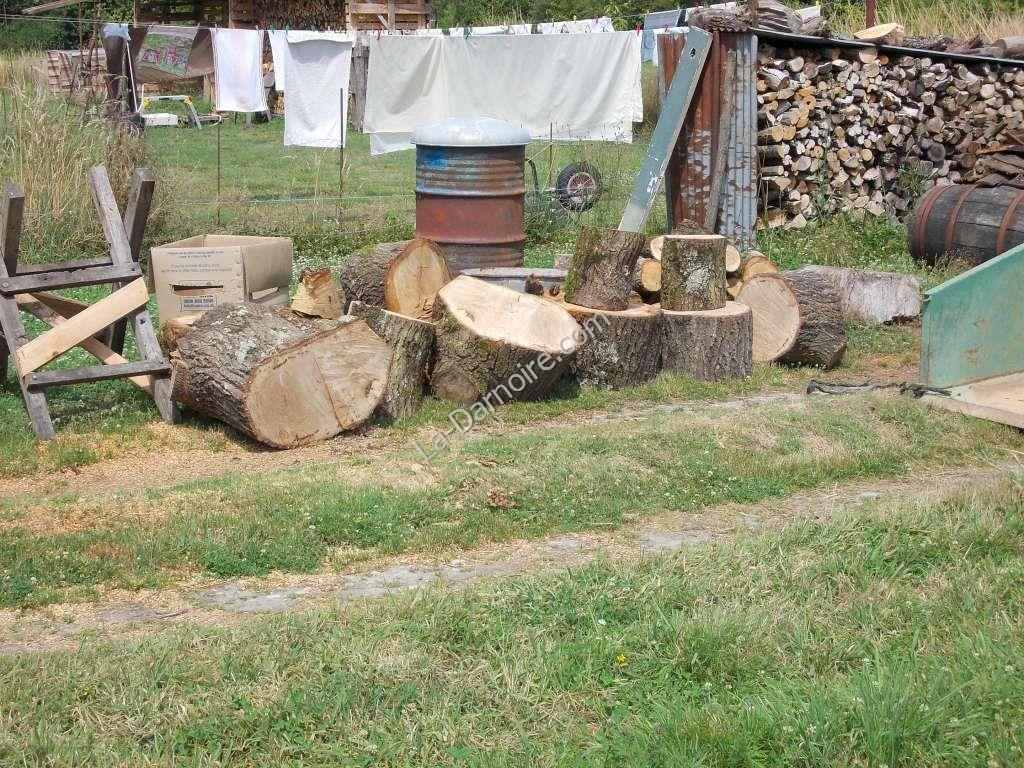A wood stove obviously uses firewood. Lots of firewood. We are extremely fortunate in that La Darnoire's land has not been farmed for over thirty years, so the woodland has returned. And as a result, we don't have to purchase firewood!
Yet it's not simply a case of cutting down a tree and sticking it in the woodstove. The intended firewood needs to dry out properly first. This is called "seasoning" and can take from six months to a year, depending on climate and how the wood is stored. When wood is freshly cut, it is termed "green" and contains a lot of moisture. Although it will burn in this state, much of the fire's energy is used in driving off the water, which is not only inefficient but can rapidly cause the buildup of deposits in the chimney. To season the wood, it needs to be kept dry, and also to be exposed to air movement in order to facilitate drying.
So far, I have not had to cut down any healthy trees. All the wood stored so far has been from windfalls or broken-off limbs. The next photo shows a tree which had fallen across the road leading to the property. I am trimming off the upper branches.
A storm also uprooted an old oak tree near the aged FIL's house. This single tree provided most of the wood in our woodshed for that year.
Of course I didn't process the entire tree in one go! Over the course of several months I removed the top and upper limbs, until just the main trunk was left.
The cut logs were gradually ferried home, mainly using the old Renault 5 which serves us as a runabout.
As I neared the base of the tree trunk, the cut sections obviously became larger...
... so the tractor was used instead:
The diameter of the trunk at the base was nearly a metre. I cut the trunk into 30 cm sections ready for splitting. The chainsaw I use is the aged FIL's Stihl MS260 with a 45cm guide bar. And in case you were wondering, I am trained in the use of a chainsaw, thanks to my Forestry background.
There are several ways of seasoning wood, and many heated discussions can be had concerning which method is the best. Here, the locals simply stack the logs in a long row approximately a metre high, and leave them for several years. The disadvantage of this is that the top layers get wet whenever it rains. And the bottom layer, being in contact with the soil, simply rots. In my view this is a waste of resources.
Not only that, in this area the firewood logs are generally cut to 1 metre lengths, and these lengths are then further cut and split once they have been seasoned. Personally I find cutting the firewood to its required final length, and then splitting the logs before stacking, results in a faster seasoning time, as more firewood surface area is exposed to the air. I also find splitting green logs easier; although this is not necessarily the case for all tree species. Aspen and birch, for example, split more easily when dried.
What do I use for splitting logs? Well, the old Deutz tractor belonging to the aged FIL has an hydraulic log-splitter attachment. However, there is currently a problem with the hydraulics, meaning it has the power to split sponge cake, but as soon as a piece of wood is encountered, it gives up. I therefore treated myself to a very, very decent axe. It's a Fiskars X-27. Made in Finland, exceedingly well-balanced, and makes short work of even oak. For extremely difficult logs I use a wedge and sledgehammer! And for knotty pieces of oak, I revert to using the chainsaw.
In order to protect the top layers of the wood stack, some locals purchase long pieces of tarpaulin and cover the rows of logs. This has the disadvantage of cutting off air circulation to the upper rows, so these start to rot. (T&M have experienced this and have not been too happy about it; particularly as they have to buy the logs in the first place).
As an aside, another local myth is that, once the trees have been cut, the logs need to be stacked on end for a year. This exposure to the rain supposedly causes the tannin in the wood to run out of the lower end, so the chimney remains cleaner when the logs are burnt. Yes, some tannin will leach out, but it's a miniscule amount. And the lower end of the log will start to rot, too. If you examine the cellular structure of wood, you'll see that a log does not consist of a lot of tubes like drinking straws. If you really want to remove more tannin, the logs need to be fully submerged in water for several months. Which kind of defeats the objective of producing dry firewood. (Tannin can be extracted from wood by using solvents or boiling water, but the purpose of this process is to obtain tannin, not produce tannin-free wood).
So a better method of producing dry firewood is to store it in a wood shed. I made one out of old pallets: Pallet Wood Shed


